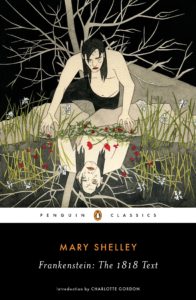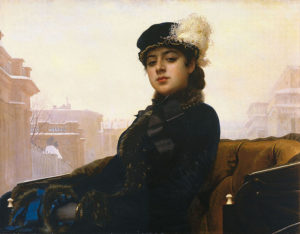How To Write Literary Fiction
Recently Dundurn Press, the publisher of my latest novel, “Even So,” asked me to write a blog for their “Advice To Writers” feature and they suggested the subject “How to Write Literary Fiction.” Why? Because they love to ask the hard questions!
I encourage you to go to Dundurn’s site, so you can see (and order) all the wonderful books they’re publishing, including “Two White Queens and the One-Eyed Jack” by Heidi von Pelleske, and the Giller-longlisted “The Son of the House” by Cheluchi Onyemelukwe-Onuobia.
But, here’s my answer to that difficult question:
The title to this essay begs the question, “What is literary fiction?”

Penguin’s wonderful “Frankenstein” cover
If a story is beautifully told, isn’t it literary? Certainly, there are obvious examples of literature so focused on experimentation with form as to be solidly in the literary camp, and some frothy romances or gruesome horror stories that proudly wave the genre flag. But others balance on more shifting sands. For example, while I could argue Shelley’s Frankenstein is literary fiction because of the beauty of the prose and the insight into the characters, I could just as easily insist it’s genre fiction due to the monster and the horror of it all.

As you can see, I’m love Penguin’s artwork.
Perhaps we can agree genre fiction follows a certain formula? A genre romance is likely to have a happy ending. Madame Bovary may be a romance, but it’s ending is anything but happy, so let’s put it into the literary category. Sci-fi is generally considered genre fiction, but wouldn’t Ursula Le Guin be considered literary? Crime fiction? Well, detective novels would be genre, but on what side would Sherlock Holmes fall, or Dostoyevsky’s Raskolnikov?
You see the problem.
But let’s agree on a couple of things.

“Portrait of an Unknown Woman, by Ivan Kramskoi (used as the portrait of Anna Karenina on Barnes & Noble Classic’s cover.
First, literary fiction is more likely to focus more on the interior world of a character than on the car chases they’re involved in. What we remember about genre fiction is likely to be the plot: the erupting volcano, the car chase, the alien invasion. What we remember about literary fiction is likely to be the character: Madame Bovary, Anna Karenina, Jay Gatsby.
Second, literary fiction shines a light on the human condition, and in doing so it isn’t always a ‘happy’ read. It’s trying to make sense of the world, and the world, as we know, is a messy place. Whereas genre fiction aims primarily to entertain, literary fiction, it might be argued, aims less to entertain than to provoke thought, conversation, even transformation. (Although to be clear, those of us who write literary fiction hope we entertain as well.)
So, how does one write literary fiction?
Start by mining your obsessions for subject matter. Injustice. Abuse of power (from the familial to the national). The climate emergency. Racism. Sexism. Faith or the loss of faith. What really p*sses you off? What can’t you stop thinking about? Got it? Good.

“One Ring To Rule Them All”
Now, think of a person facing a situation and/or a moral dilemma involving that thing. Write about the person until you know them better than anyone else, since it is this person, and how they respond to events you create for them, who will be the beating heart of your story. You keep your gaze on the character: what they long for, what stops them from attaining whatever they long for, and how finally getting that thing — or not getting that thing — changes them. And, remember, as J.R.R. Tolkien so brilliantly portrayed, even if what they want is something quite simple like, say, a ring, that ring should symbolize something so much more!
I’m looking forward to checking out your piece on this via Dundurn. I enjoyed Heidi von Pelleske’s novel and am curious to see what she brings into the follow-up books (two, I believe?). Have actually just begun the other you’ve recommended as well, by Cheluchi Onyemelukwe-Onuobia, as I’ve got a review of it coming next month.
I’m glad you liked Heidi von Pelleske’s book. So curious about The Son of the House! Hope it makes it to the top of my leaning tower of Pisa pile of to-read books quickly. #readingAsFastAsICan
You packed a lot of wisdom into a short amount of words! Thanks for these insights on literary fiction and how it compares to other genres. I’ve read most of your books, and there’s no doubt you have mastered your craft. As you say so well above, you’ve “provoked thought, conversation, even transformation” and yes, your character development and plots have been captivating, sometimes gut-wrenching, and entertaining. I just purchased your new book Even So.
Keep writing! thanks, Sophia T.
Thanks so much, Sophia!